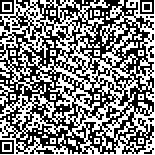| 摘要: |
| [摘要] 目的 通过动物实验探讨感觉神经移位一期联合修复尺神经高位(肘关节以上)损伤,手内在肌组织学变化及吻合口神经病理学变化。方法 选用成年雄性猕猴6只,以上肢为研究单位,6只动物双侧上肢随机分为3组,每组4侧上肢。A组(实验组):于上臂上段切断尺神经,再重新端端吻合。于远端切断桡神经浅支,移位于腕部与尺神经(外膜开窗)作端侧吻合。B组(对照组):于上臂上段切除尺神经3 cm,两断端分别折叠结扎,腕部处理同A组。C组(对照组):上臂部尺神经处理同A组,腕部不作神经移位。观察术后猴尺神经所支配的手内在肌萎缩程度。取术后1个月、3个月、6个月、12个月猴尺神经支配的手内在肌端侧吻合口、端侧吻合口以远的神经干及小鱼际肌组织,做成切片,光镜下观察其显微结构的变化。结果 术后12个月观察到A组雄猴手内在肌恢复自主活动,术侧手内在肌肌肉萎缩不明显;B组术侧手内在肌肌肉萎缩,程度较C组轻;C组术侧手内在肌肌肉明显萎缩。组织学观察结果显示,术后A组神经纤维数量、密度随时间延长而逐渐增加。B组术后神经纤维数量、密度达到一定数值后无明显变化,但未见肌肉出现变性坏死现象。C组神经纤维数量明显减少,肌纤维数量亦明显减少,最终大部分肌纤维萎缩伴玻璃样变,间质出血,肉芽组织形成。结论 感觉神经移位能有效防止手内在肌萎缩、变性、纤维化,为高位损伤修复后的尺神经的再生、长入创造了良好条件。 |
| 关键词: 感觉神经移位 修复 尺神经高位损伤 |
| DOI:10.3969/j.issn.1674-3806.2014.03.05 |
| 分类号:R 68 |
| 基金项目:广西青年科学基金资助项目(编号:桂科青9912026) |
|
| Study on repairing high ulnar nerve injury by low end-to-side anastomosis of superficial branch of radial nerve |
|
LIANG Bin, LI Rong-zhu,WEI Shao-ren,et al.
|
|
Department of Orthopaedics,the People′s Hospital of Guangxi Zhuang Autonomous Region,Nanning 530021,China
|
| Abstract: |
| [Abstract] Objective To explore the histological changes in intrinsic muscle and the neuropathological changes in anastomosis during repairing high ulnar nerve injury(above the elbow) at the first stage using sensory nerve transferring by experiments conducted with animals.Methods Six adult male macaques were included in the experiment and the upper limbs were studied, with the 12 limbs randomized into 3 groups(4 limbs in each group).Group A(experimental group): The ulnar nerve was cut at the upper segment of the upper limb, with end-to-end anastomosis followed. The superficial branch of radial nerve was cut at the distal end and the end-to-side anastomosis was performed by transferring the superficial branch of radial nerve to the wrist segment(fenestration was made in the outer membrane).Group B(control group): 3 cm of the ulnar nerve was cut at the upper segment of the upper limb and folding ligation was made from both ends.Treatment at the wrist segment was the same as in group A. Group C(Control group): Treatment at the unlar nerve of the upper was the same as in group A. But no transferring was made at the wrist segment. The atrophy of intrinsic muscle controlled by ulnar nerve was observed after surgery. The intrinsic muscle at the end-to-side anastomosis, neural stem distal to end-to-side anastomosis and hypothenar muscle were collected at 1M, 3M, 6M and 12M after surgery and the tissues collected were made into sections to observe the changes under microscope.Results The intrinsic muscle of the macaques in group A restored autonomic activity 12 months after surgery and no obvious atrophy in intrinsic muscle of the operated side was observed. Atrophy in intrinsic muscle of the operated side was observed in group B and group C, but with more obvious atrophy observed in group C. Histological observation revealed that the number and density of nerve fibres increased as the time went on in group A. While in group B, the number and density of nerve fibres kept stable after increase to certain degree, but no necrosis was observed. In group C, the number of nerve fibres decreased significantly as time went on. The number of muscle fibres also decreased significantly and besides atrophy, hyalinization, interstitial hemorrhage and formation of granulation tissue were observed in most muscle fibres.Conclusion Sensory nerve transferring is effective in preventing atrophy, degeneration and fibrosis of intrinsic muscle and provides favourite situation for the regeneration and growth of ulnar nerve after repairing for high injury. |
| Key words: Sensory nerve transferring Repairing High ulnar nerve injury |

